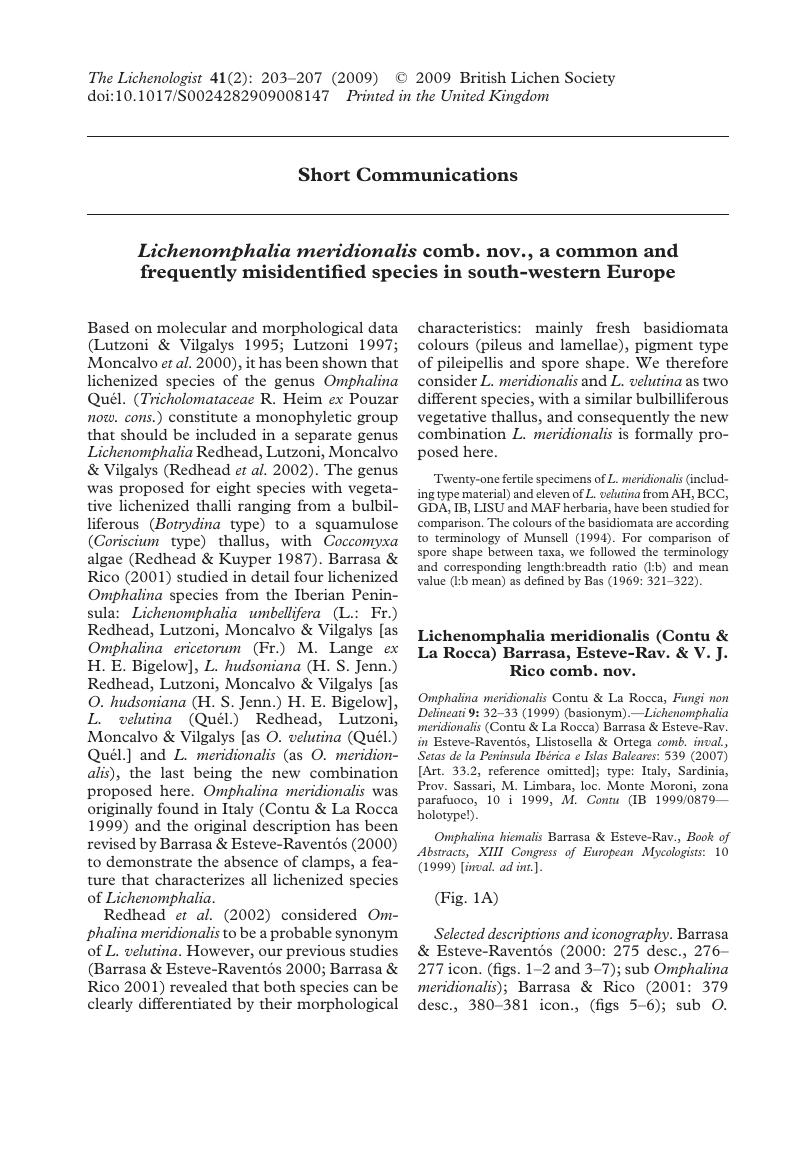Crossref Citations
This article has been cited by the following publications. This list is generated based on data provided by Crossref.
Egan, Robert S.
2009.
Recent literature on lichens—214.
The Bryologist,
Vol. 112,
Issue. 3,
p.
634.
He, Mao-Qiang
Zhao, Rui-Lin
Hyde, Kevin D.
Begerow, Dominik
Kemler, Martin
Yurkov, Andrey
McKenzie, Eric H. C.
Raspé, Olivier
Kakishima, Makoto
Sánchez-Ramírez, Santiago
Vellinga, Else C.
Halling, Roy
Papp, Viktor
Zmitrovich, Ivan V.
Buyck, Bart
Ertz, Damien
Wijayawardene, Nalin N.
Cui, Bao-Kai
Schoutteten, Nathan
Liu, Xin-Zhan
Li, Tai-Hui
Yao, Yi-Jian
Zhu, Xin-Yu
Liu, An-Qi
Li, Guo-Jie
Zhang, Ming-Zhe
Ling, Zhi-Lin
Cao, Bin
Antonín, Vladimír
Boekhout, Teun
da Silva, Bianca Denise Barbosa
De Crop, Eske
Decock, Cony
Dima, Bálint
Dutta, Arun Kumar
Fell, Jack W.
Geml, József
Ghobad-Nejhad, Masoomeh
Giachini, Admir J.
Gibertoni, Tatiana B.
Gorjón, Sergio P.
Haelewaters, Danny
He, Shuang-Hui
Hodkinson, Brendan P.
Horak, Egon
Hoshino, Tamotsu
Justo, Alfredo
Lim, Young Woon
Menolli, Nelson
Mešić, Armin
Moncalvo, Jean-Marc
Mueller, Gregory M.
Nagy, László G.
Nilsson, R. Henrik
Noordeloos, Machiel
Nuytinck, Jorinde
Orihara, Takamichi
Ratchadawan, Cheewangkoon
Rajchenberg, Mario
Silva-Filho, Alexandre G. S.
Sulzbacher, Marcelo Aloisio
Tkalčec, Zdenko
Valenzuela, Ricardo
Verbeken, Annemieke
Vizzini, Alfredo
Wartchow, Felipe
Wei, Tie-Zheng
Weiß, Michael
Zhao, Chang-Lin
and
Kirk, Paul M.
2019.
Notes, outline and divergence times of Basidiomycota.
Fungal Diversity,
Vol. 99,
Issue. 1,
p.
105.
Gasulla, Francisco
Barrasa, José M.
Casano, Leonardo M.
and
del Campo, Eva M.
2020.
Symbiont composition of the basidiolichen Lichenomphalia meridionalis varies with altitude in the Iberian Peninsula.
The Lichenologist,
Vol. 52,
Issue. 1,
p.
17.
Nagy, József
Németh, Csaba
Dima, Bálint
and
Papp, Viktor
2020.
Lichenomphalia meridionalis, an agaricoid basidiolichen species new to Central Europe.
Herzogia,
Vol. 33,
Issue. 1,
p.
25.



